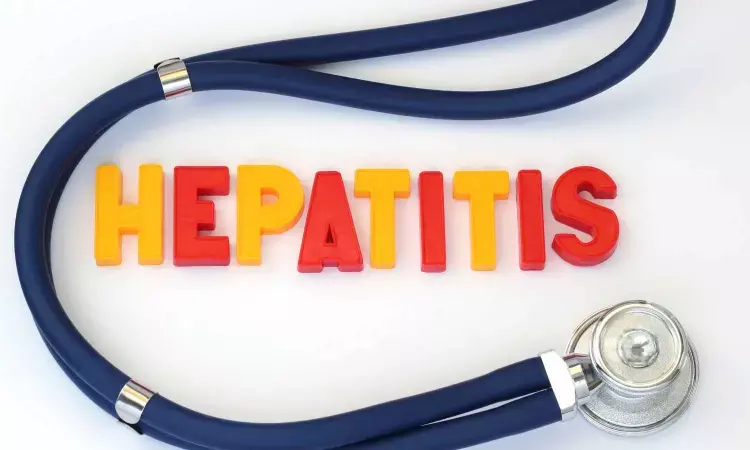- Home
- Medical news & Guidelines
- Anesthesiology
- Cardiology and CTVS
- Critical Care
- Dentistry
- Dermatology
- Diabetes and Endocrinology
- ENT
- Gastroenterology
- Medicine
- Nephrology
- Neurology
- Obstretics-Gynaecology
- Oncology
- Ophthalmology
- Orthopaedics
- Pediatrics-Neonatology
- Psychiatry
- Pulmonology
- Radiology
- Surgery
- Urology
- Laboratory Medicine
- Diet
- Nursing
- Paramedical
- Physiotherapy
- Health news
- Fact Check
- Bone Health Fact Check
- Brain Health Fact Check
- Cancer Related Fact Check
- Child Care Fact Check
- Dental and oral health fact check
- Diabetes and metabolic health fact check
- Diet and Nutrition Fact Check
- Eye and ENT Care Fact Check
- Fitness fact check
- Gut health fact check
- Heart health fact check
- Kidney health fact check
- Medical education fact check
- Men's health fact check
- Respiratory fact check
- Skin and hair care fact check
- Vaccine and Immunization fact check
- Women's health fact check
- AYUSH
- State News
- Andaman and Nicobar Islands
- Andhra Pradesh
- Arunachal Pradesh
- Assam
- Bihar
- Chandigarh
- Chattisgarh
- Dadra and Nagar Haveli
- Daman and Diu
- Delhi
- Goa
- Gujarat
- Haryana
- Himachal Pradesh
- Jammu & Kashmir
- Jharkhand
- Karnataka
- Kerala
- Ladakh
- Lakshadweep
- Madhya Pradesh
- Maharashtra
- Manipur
- Meghalaya
- Mizoram
- Nagaland
- Odisha
- Puducherry
- Punjab
- Rajasthan
- Sikkim
- Tamil Nadu
- Telangana
- Tripura
- Uttar Pradesh
- Uttrakhand
- West Bengal
- Medical Education
- Industry
Study examines How Delivery and Feeding Choices Influence Hepatitis B Transmission from Mother to Child

Recent study investigated mother-to-child transmission (MTCT) rates of hepatitis B virus (HBV) in infants born to non-antiviral mothers with high viremia (HBV DNA > 2 × 10^5 IU/ml) under various delivery and feeding modes. Chronic HBV infection poses significant public health concerns, with MTCT being a primary transmission route. After the implementation of passive-active immunoprophylaxis, MTCT rates significantly decreased; however, additional factors like mode of delivery and choice of feeding remain contentious. The research involved secondary analysis from two multicenter prospective cohort studies, focusing solely on mothers with high viremia who did not receive antiviral therapy. A total of 462 infants, born to 460 mothers, were included. They were divided based on their delivery (vaginal delivery or elective cesarean section -[ECS-]) and feeding modes (breastfeeding or bottle-feeding). All infants received hepatitis B immunoglobulin and the hepatitis B vaccine shortly after birth.
Infection Rate Outcomes
Results indicated that among the 462 infants, the overall HBV infection rate was low at 2.4%. Infection rates were comparable across different delivery methods: 2.0% for vaginal deliveries and 2.8% for ECS. Likewise, no significant difference in infection rates was observed between breastfed (3.2%) and bottle-fed infants (1.1%). Upon analyzing various combinations of delivery and feeding modes, MTCT rates were also similar across these groups, suggesting that neither ECS nor bottle-feeding offered additional protection against HBV transmission.
Efficacy of Immunoprophylaxis
The findings emphasized the efficacy of timely immunoprophylaxis in reducing MTCT rates, aligning with previous studies that highlighted similar outcomes. Moreover, breastfeeding did not appear to elevate the risk of HBV transmission, supporting recommendations from major health organizations advocating for breastfeeding even in HBV-infected mothers.
Study Limitations
Despite the positive implications of the study, several limitations were noted. The non-randomized allocation of participants among groups and the absence of non-elective cesarean sections in the analysis limited the breadth of conclusions. Furthermore, the timing of immunoprophylaxis might influence external validity in settings where immediate vaccination is not guaranteed. Ultimately, the study concluded that vaginal delivery and breastfeeding are safe for infants born to high viremic HBV carrier mothers, reinforcing the need for maternal antiviral prophylaxis to effectively prevent MTCT of HBV.
Key Points
- The study assessed mother-to-child transmission (MTCT) rates of hepatitis B virus (HBV) in infants born to non-antiviral mothers with high viremia (HBV DNA > 2 × 10^5 IU/ml), highlighting the impact of delivery and feeding methods post-birth.
- A total of 462 infants born to 460 mothers were analyzed, with all infants receiving hepatitis B immunoglobulin and vaccination after birth. The MTCT rate was low at 2.4%, with similar rates observed across delivery methods (2.0% for vaginal and 2.8% for elective cesarean section) and feeding options (3.2% for breastfeeding and 1.1% for bottle-feeding).
- Detailed examination of various combinations of delivery and feeding modes revealed no significant differences in infection rates, indicating that elective cesarean sections and bottle-feeding did not provide additional protection against HBV transmission.
- The efficacy of timely immunoprophylaxis in reducing MTCT rates was demonstrated, supporting the continuation of breastfeeding in HBV-infected mothers as recommended by health organizations since it did not increase transmission risk.
- Study limitations included the non-randomized allocation of participants and the lack of analysis on non-elective cesarean sections, potentially restricting the applicability of the findings. Additionally, the timing of immunoprophylaxis may affect results in settings with delayed vaccination.
- The study concluded that vaginal delivery and breastfeeding are safe for infants born to mothers with high viremic HBV, while emphasizing the importance of maternal antiviral prophylaxis to effectively reduce HBV transmission to infants.
Reference –
Hongyu Huang et al. (2025). Elective Cesarean Section And Bottle-Feeding Do Not Reduce Infection Of Hepatitis B In Infants Of High Viremic Mothers: A Retrospective Study. *BMC Pregnancy And Childbirth*, 25. https://doi.org/10.1186/s12884-025-07606-z.
Dr Kamal Kant Kohli-MBBS, DTCD- a chest specialist with more than 30 years of practice and a flair for writing clinical articles, Dr Kamal Kant Kohli joined Medical Dialogues as a Chief Editor of Medical News. Besides writing articles, as an editor, he proofreads and verifies all the medical content published on Medical Dialogues including those coming from journals, studies,medical conferences,guidelines etc. Email: drkohli@medicaldialogues.in. Contact no. 011-43720751


